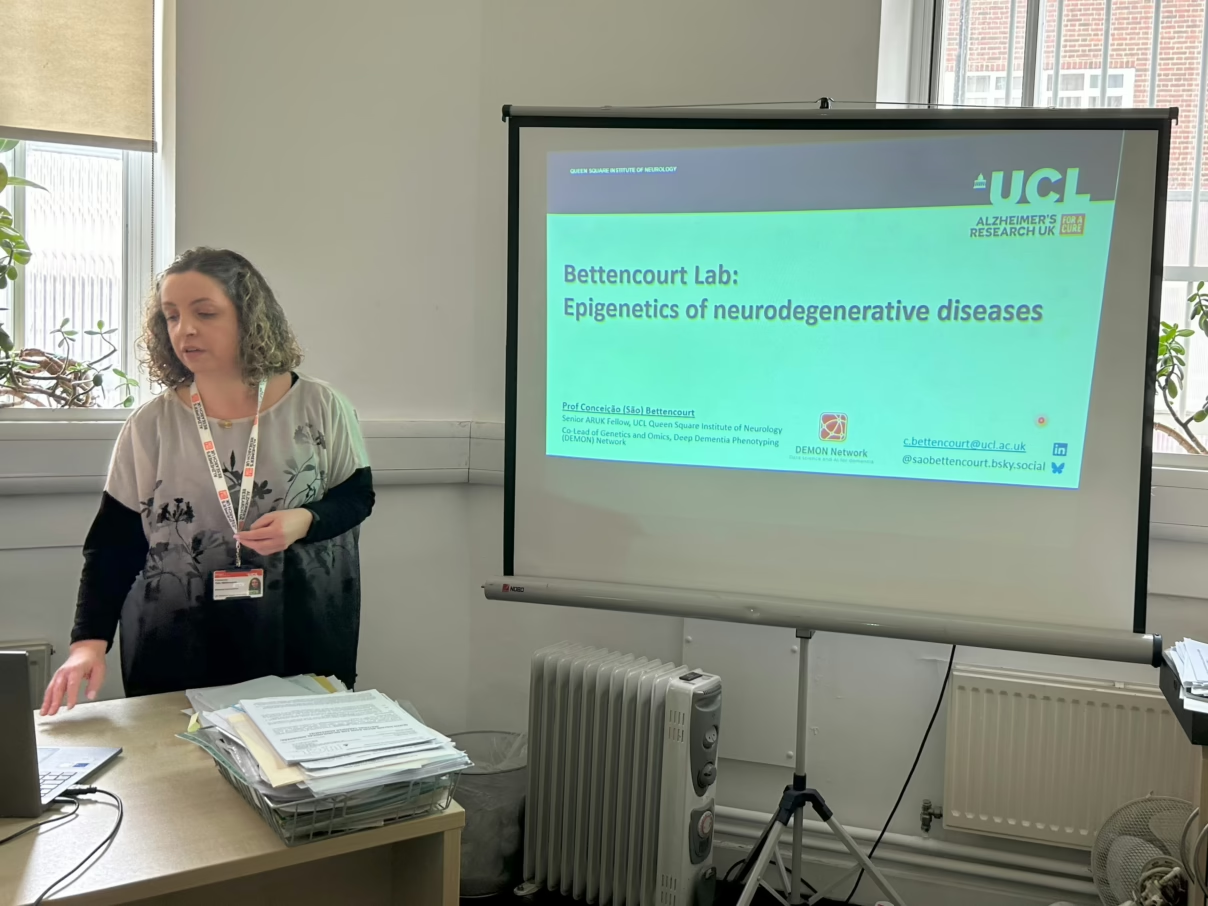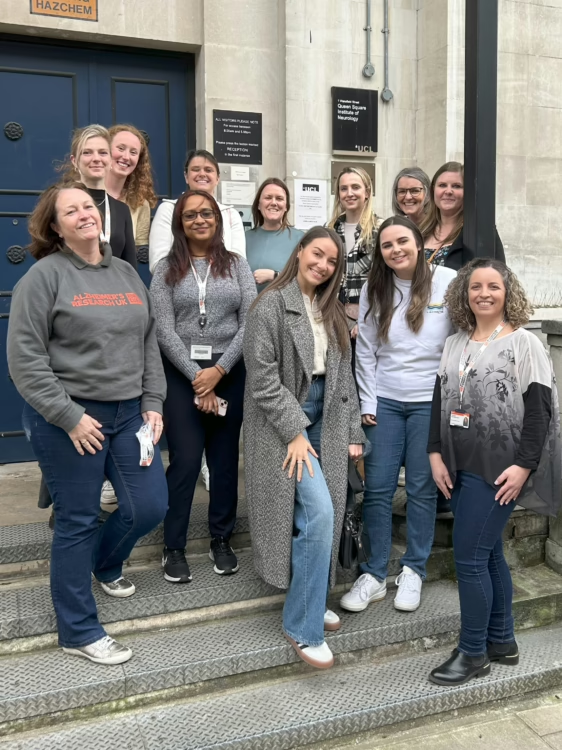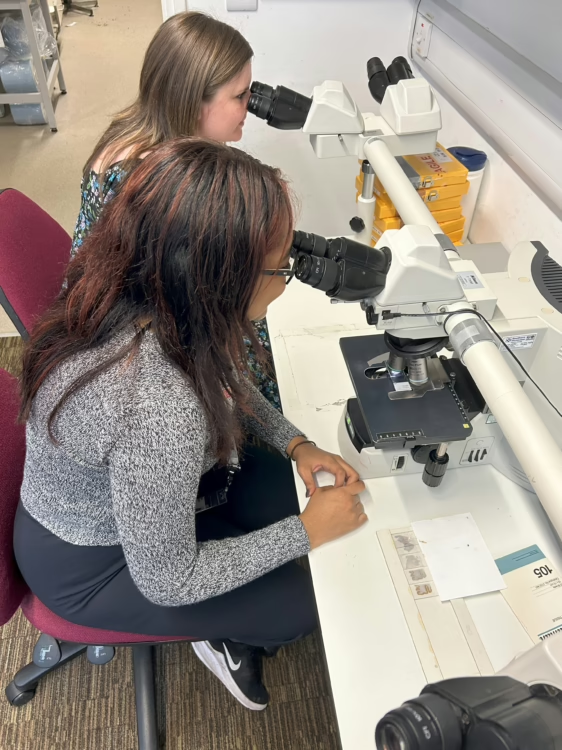
On 21st April Myself, Izzy, Kerin, Kayleigh, Tayler, Bekka and Marie took a minibus to UCL in East London to have a tour of the UCL Neurology lab and discuss some of the phenomenal research being undertaken there.
It started with an early morning minibus journey. We all needed to be at the Maidstone office for 7:30am so that we could hop into the minibus and start the journey to Wakefield Street in London, the home of UCL’s Queen Square Institute of Neurology.
Once we made it to London, and woke Izzy from her nap, we had some time to spare and went to grab ourselves some much needed warm drinks and breakfast at a nearby Starbucks before heading back to UCL and meeting Shelle, our regional fundraising officer who we are working closely with whilst Alzheimer’s Research UK are the firm’s charity of the year. Shelle was instrumental in organising today’s event.

Once inside, we met with Professor Sao Bettencourt who is the senior research fellow at the Bettencourt Lab. She gave a very brief introduction to herself and the lab before allowing Shelle to step forward and give a general introduction to the projects that ARUK funds at UCL including vital research into what proteins in the brain contribute to someone living with dementia.
Sao then returned to give a more detailed presentation. She went into the detail of the differences between a healthy brain and a diseased brain. She described how when a person develops dementia that they can lose brain mass that on average equates the weight of an orange (hence ARUK’s colour being orange) but also that it is the proteins around the neuron pathways (very similar to pipe lagging) and their deterioration which contributes to dementia symptoms and the gradual decline in a person’s physical and brain health. Different proteins acting abnormally result in different types of dementia and thankfully, Sao’s research focuses on many of the proteins to try and work out what causes them to act abnormally which then results in the development of the many kinds of dementia.
Thanks to Sao’s research, they have identified some of the genes that trigger the proteins to then act abnormally but, even more impressive, Sao is researching the white matter in the brain. The brain has two types of matter, grey matter (which helps Agatha Christie’s Poirot solve the numerous murders he comes across) which you will find around the outside of the brain and white matter, which is on the inside and carries the signals from one area of grey matter to another. When a person begins to experience dementia symptoms, they lose their white matter which is what results in the decrease in memory function, the brain is physically incapable of sending and receiving the necessary signals to aid memory recall. By conducting further research, Sao hopes to be able to identify what causes the proteins in the brain to begin acting abnormally and then develop treatments to help delay or perhaps prevent this abnormal behaviour.
After Sao’s talk, we were invited to pair up and go for a short tour of the lab. We were able to see where they store the brains that are due to be worked on as well as what they call ‘the wet lab’ which is where (sorry for all those who are squeamish!) they cut up and then slice the brain into pieces that can then be stained and viewed under a microscope to be studied. Speaking of which, that was the next stop on the tour. The team had kindly prepared two small slices of brain (a strange sentence I know) that we could view under the microscope. We could see that the staining had attached itself to the different proteins and we could see them clearer because they had taken on the staining colour, the two samples we looked at both affected by different types of dementia.

After the lab tour, we had the opportunity to hear from two students working in the lab, it was hoped to be three but one was presenting her PHD Thesis that day (and we were pleased to hear she passed a few days after!).
The two students discussed their own paths into becoming researchers at the lab, their own reasonings for wanting to research Alzheimer’s and what their individual research focussed on. Both were very grateful to Alzheimer’s Research UK for funding their research through their grants. Both had such a passion and love for their works that was so evident it was hard to not smile along with them and want to support them more.
After a day of learning, it was time to head back to the office and reflect. It was phenomenal to be in an environment where you could see the teamwork and effort being put in to try and tackle an increasingly prevalent problem that has become ‘a part of aging’, although it doesn’t need to be.
Alzheimer’s disease and other types of dementia are not ‘a natural part of aging’, it is a disease that affects the brain and we can all stake steps to reduce our risk of being affected. If we keep our brains as active as we keep our bodies we reduce our risk of being affected, especially as it is thought that approximately 45% of dementia cases worldwide can be prevented or delayed.
There are now more than 160 trials underway testing over 125 experimental treatments for Alzheimer’s across the globe, with over 30 in phase 3 trials. You can find out more about dementia and dementia research on the Alzheimer’s Research UK website: Facts and stats – Alzheimer’s Research UK